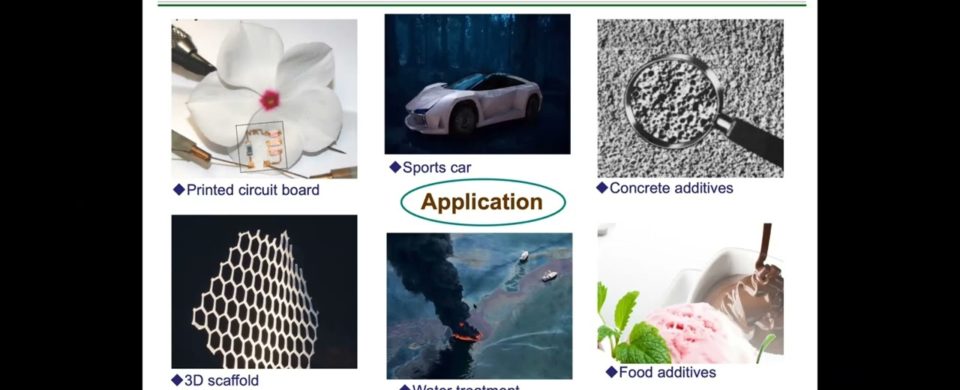Nanocellulose Materials in Water Treatment
Abstract: Wastewater discharged from expanded manufacturing, processing of chemicals, electronic materials and petroleum, contains a huge amount of pollutants like toxic heavy metals, oils and organic dyes. There is an urgent need to develop new strategies and techniques for water purification. Sustainable and environmentally benign nanocellulose materials are much attractive from the surface properties and economic viewpoints as adsorbents for different pollutants. Herein, we report a series of novel materials derived from nanocellulose for water treatment with an emphasize on the structural design that governs their performance. The chemical composition, micromorphology, special wettability, porosity, etc., can be well defined to target various water-soluble pollutants. For example, a dendrimer poly(amidoamine)-grafted cellulose nanofibril (PAMAM-g-CNF) aerogel is synthesized, which bares abundant functional groups with a bimodal pore structure and a high specific surface area, leading to a record-high Cr(VI) removal capacity of 377.36 mg/g. Another example is the membrane filter that is comprised of unique hollow nanofibers from electrospun cellulose. It demonstrates distinct advantages of high flexibility and high-water flux, and can be assembled into flat membrane modules and spiral-wound membrane modules for high efficiency treatment of industrial/agricultural wastewater and drinking water which contains a trace amount of toxic pollutants. This work indicates that nanocellulose is rather appealing for future wastewater remediation. With regard to insoluble oils, inspired by the fish scale, a cellulose hydrogel-coated mesh was prepared by a simple dip-coating and heating process. Owing to the abundant hydroxyl groups and microscopic roughness of the cellulose hydrogel, the resulting mesh exhibited superhydrophilicity and underwater superoleophobicity, leading to high flux, high oil/water separation efficiency and excellent recyclability. Meanwhile, insoluble oils often coexist with soluble dyes. An all-cellulose composite membrane was fabricated using a filter paper as the substrate, a cellulose gel as the coating layer and an edible citric acid as the crosslinker and active compound, which could separate oil-in-water emulsion and remove dye from water simultaneously.
Keywords: Cellulose aerogel, cellulose nanofiber, electrospinning, water treatment.
Full Article: https://www.proceedings.iaamonline.org/article/vpoam-2021-0185
Join us: https://www.iaamonline.org/
Comments are closed.

